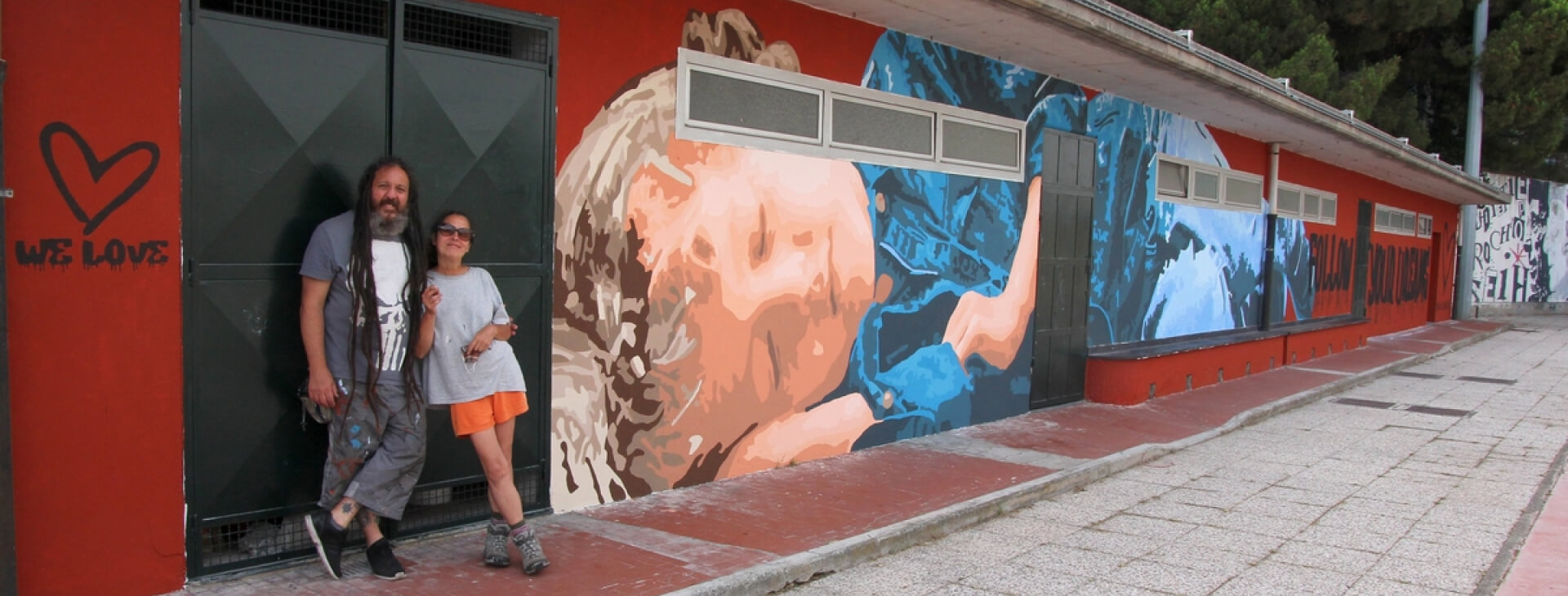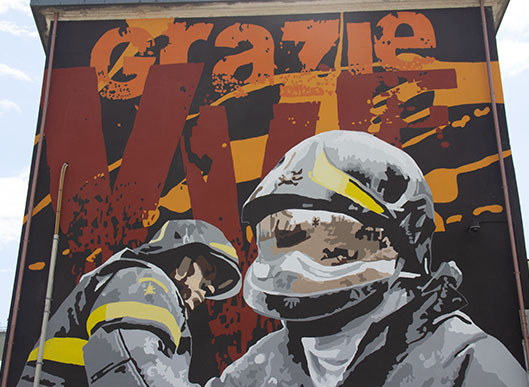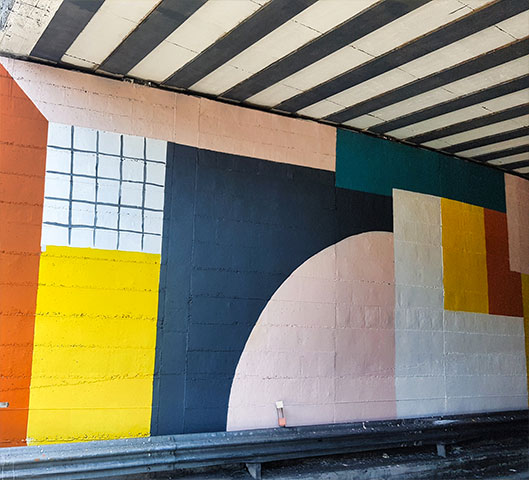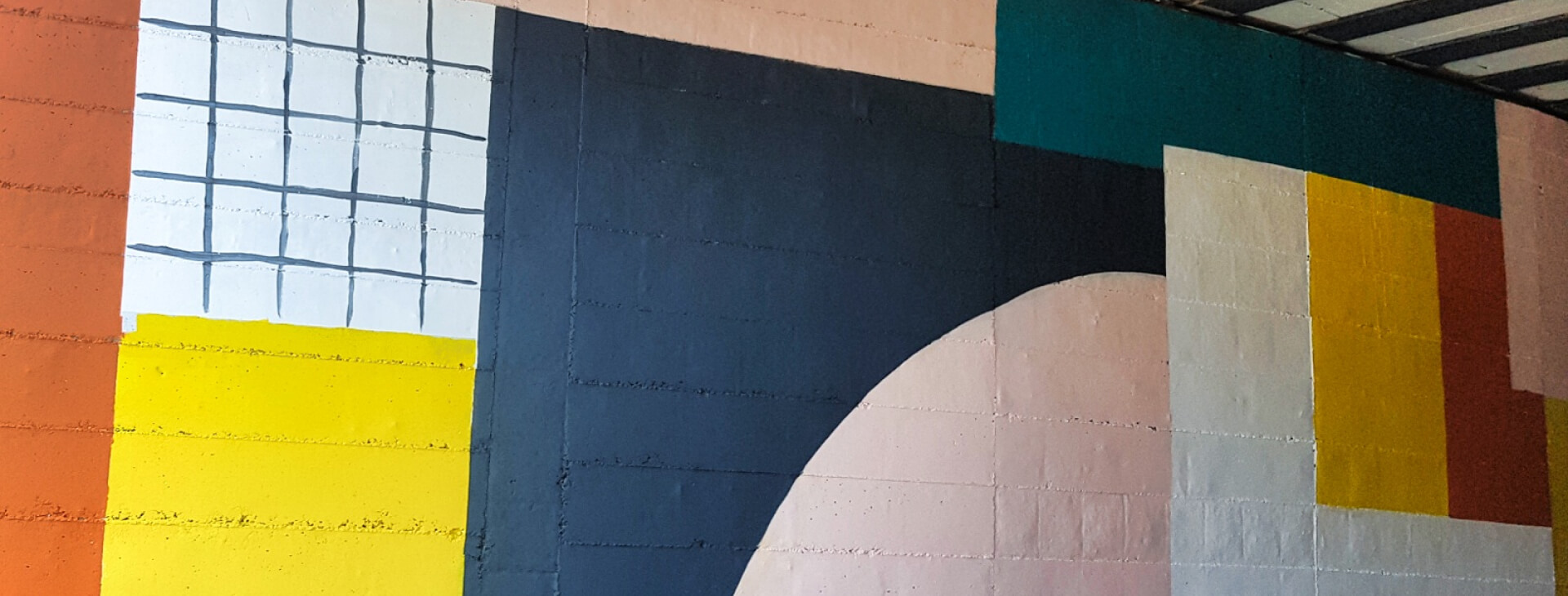The debate on urban projects for the regeneration of our cities is becoming increasingly intense. Although at the beginning street art and its colours were considered to be an action “against” urban choices focused on the needs of the inhabitants or the abandonment of neighbourhoods, today urban regeneration policies integrate artists in the design of more liveable cities. Street art changes, not only because a new ecological sensitivity sees the artists using fewer spray cans, but because the clandestine spirit once needed to change minds on thinking differently about public spaces has reached its goal, and the concept of caring for spaces (from an artistic point of view as well) and social wellbeing has now become a part of political agendas. Colour shapes spaces, creating large canvases for projecting a sense of community, it gives lightness and dynamism through the roads of the city, helping people forget the weight of tunnels and pilasters that guide the movements of the cities.
Urban art is evolving and experimenting with a new relationship of networks created by artists, administrators, curators, local businesses and, above all, citizens. Although in the history of clandestine street art those living in the spaces did not feel represented, and felt they were subjected to the artistic act, now there is much more sensitivity, and artists are having the locals participate in the creation of large murals.

This is what happened, for example, in the CEP neighborhood in Genova, with four paintings by DrinaA12 & Giuliogol. Their works are frescoes, created using antique techniques, like dusting, applied to urban structures that become a medium for revisited and re-contextualized photographic images. The detail in the profiles is reality captured in a moment and place that is lost in the unfocused image, but by becoming a mural it finds new confines only when seen from a distance, in a reversed perspective. But the real strength of the work of these two mural artists is that this technique allows for the involvement of passers-by in its creation, as they can paint without making mistakes, putting their hands directly on a neighbourhood project, becoming a piece of their own personal heritage.
The murals in the CEP were created for example, after careful social design of the spaces done together with school children, who worked on the concept of public art as a reflection of the art of life: the limits of architecture and creativity teaches them how to work within limits without taking away freedom, learning that through focus is an increased inventiveness and responsibility. DrinaA12 & Giuliogol are also the authors of the monumental piece under the Ponte San Giorgio bridge, rebuilt after the collapse of Ponte Morandi bridge.
A subject that the artists had in mind for a long time and that now try to recreate a connection between the reconstructed and the emotional energy which has never left that space. But the colour and its geometry are often companions for the daily travels of those going around the city.

The Repicta project aims to protect a fundamental artery of urban mobility through art. The fifteen kilometres crossing the city from one end to the other, with its, crossroads, junctions and ramps. A useful piece of engineering but considered to be aesthetically unpleasant. The project will include five pieces of art by different artists. Boero’s colours will participate in this regeneration also through the piece “tunnel del colore” created and made by Greg Jager.
Also, in this case there will be perspectives and colours creating diagonals and abstract figures created to accompany the unfocused gaze in movement. So the piece is made up of colour, geometric shapes and speed that characterises the context of the observer. When talking about urban art one does not often consider the difficulty in producing work like this “Logistics, permits, but above all the need to work at night have been a real challenge for the piece,” says Emanuela Caronti from Linkinart, the association involved in the creation of the Repicta project and one of the businesses working in the promotion and curating of the city’s regeneration through Urban Art. Street artists are able to adapt and move throughout different contexts. Greg Jager can now be considered a contemporary artist. He also works on canvas, but clearly the design of pieces like these follows a different path and experiments compared to static observation. The artist is not only creative, he is a worker and sculptor of the perception of the space.” Greg Jager’s art is a combination of art, graphics, anthropology and architecture, he is inspired by Bahaus, Russian Avantegarde and Italian ArteCinetica; in this piece he was particularly inspired by murals in the 1960s and 70s. The term urban regeneration is not always loved by artists, who see it as a term with flatness and scalability in a world, like that of art, that is above all research and anthropology, and for this reason cannot be reined in by the rules of each territory/community. Urban Art pieces can then be an opportunity to ask questions without having the arrogance of having pre-packaged responses. Art is research and needs good tools to interrogate society with its action, demanding solutions.
A role that it has always had, and will continue to have.

